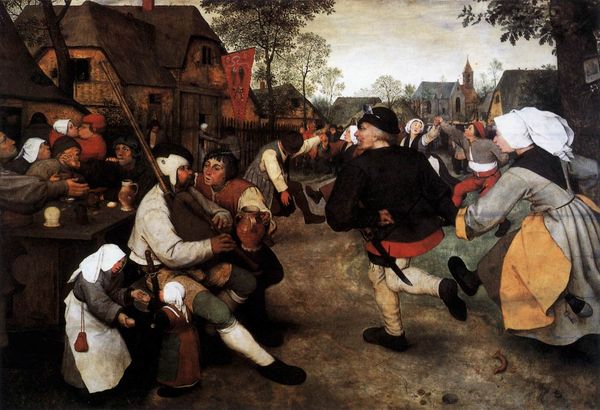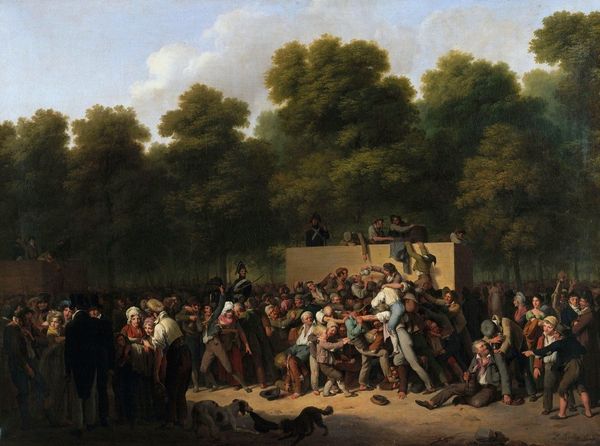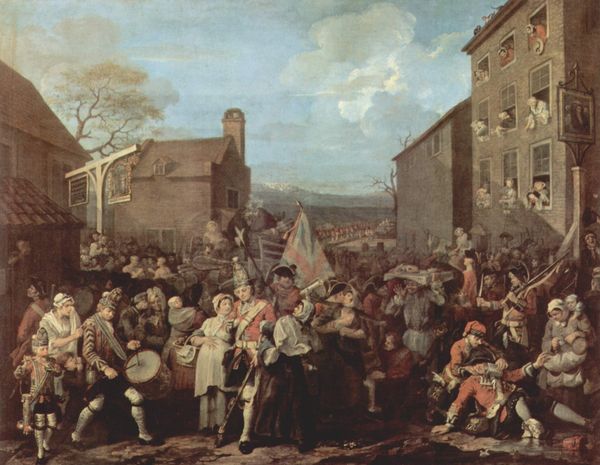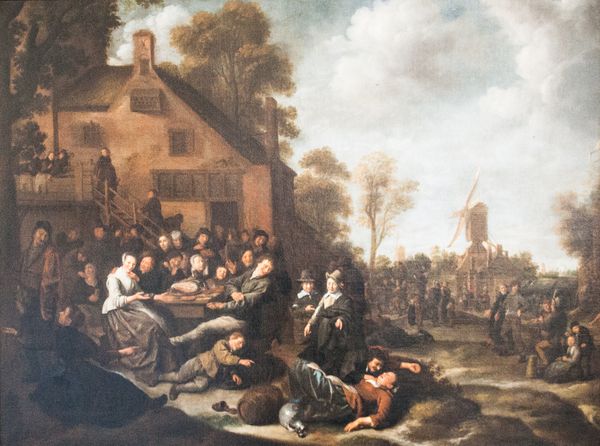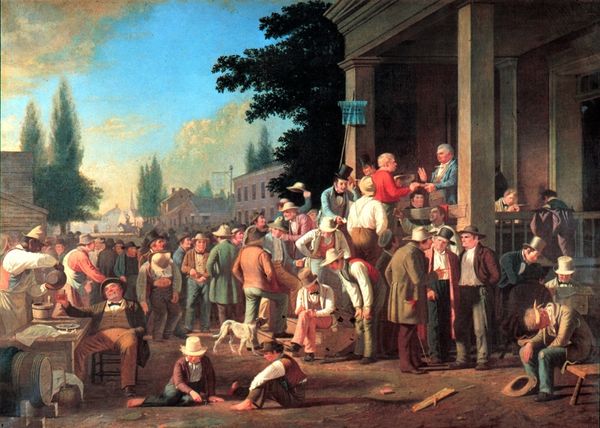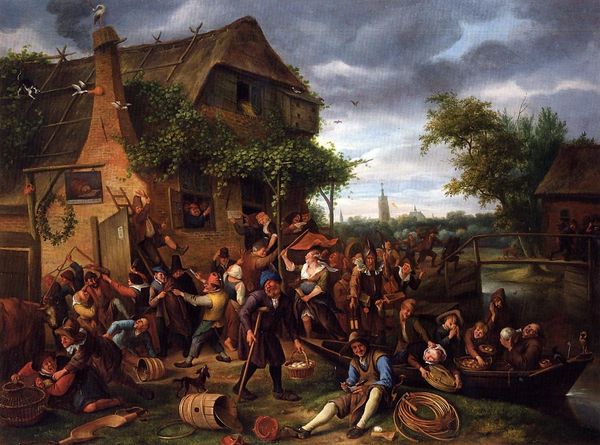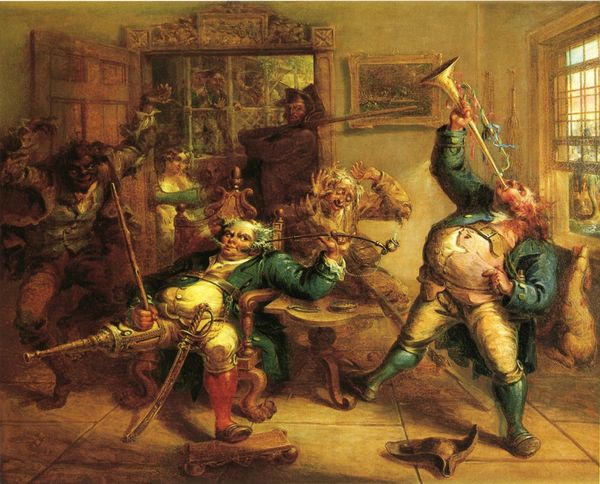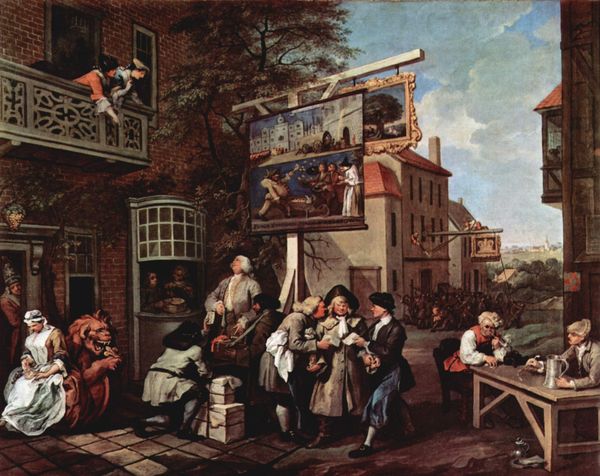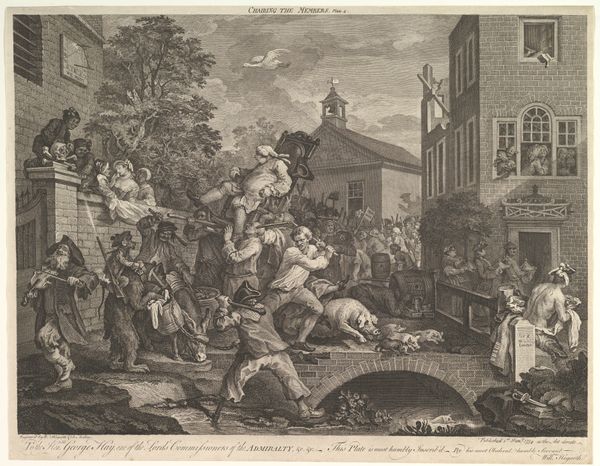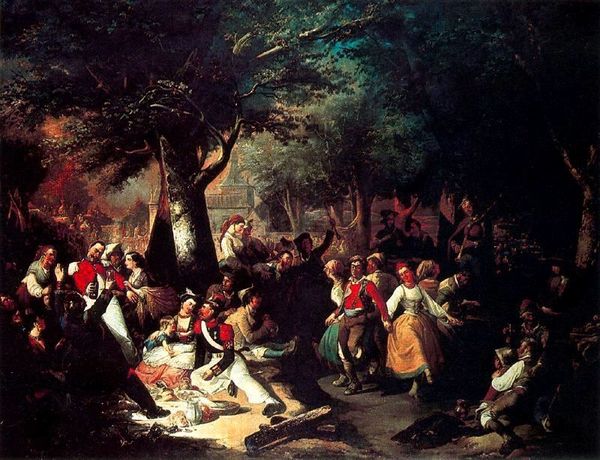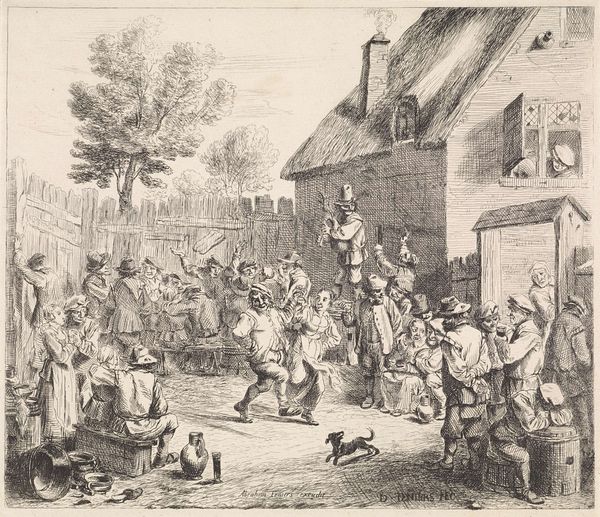
painting, oil-paint
#
portrait
#
allegories
#
allegory
#
narrative-art
#
baroque
#
symbol
#
painting
#
oil-paint
#
sculpture
#
figuration
#
oil painting
#
15_18th-century
#
genre-painting
#
history-painting
#
mixed media
Dimensions: 101.5 x 127 cm
Copyright: Public domain
Curator: William Hogarth painted "The Triumph of Representatives" around 1755. What strikes you immediately about this oil painting? Editor: Chaos! Absolute chaos. It's a whirlwind of figures, animals, and strange structures. The surface looks slick and textured; I'm curious about the artist's approach to layering the oil. Curator: It's worth considering that Hogarth created this as a satire on electoral politics of his time. This painting encapsulates the corruption and rowdiness surrounding elections, particularly focusing on the exploitation of voters. The chair raised high on men's shoulders with one occupant in it is an especially notable piece of staging. Editor: The materiality really supports that reading. The scene looks almost…unstable. Look at the rough brushstrokes, the off-kilter angles. Everything feels on the verge of collapse, literally hoisted up by what looks to be rickety poles. It seems almost engineered to fall apart at any minute. How did his methods as a painter impact the political sphere? Curator: Hogarth was very attuned to the cultural significance of print and his images circulated widely. This particular work criticizes those vying for positions of power by highlighting that the election is nothing but disarray, as demonstrated by this rowdy, disorderly composition of bodies and a building that looks to be falling to pieces. Note also how it mirrors allegories about morality with references to sculptures and their symbolism. Editor: Yes, it feels incredibly deliberate! Considering it as a production in and of itself really brings his ideas of material instability together; not just showing corruption and exploitation of working voters but truly constructing the painting to reflect such through his manipulation of space, volume, paint, etc. It’s clever how the seeming randomness still requires careful labor and craft. It's like observing a stage. Curator: Indeed. He brought serious craftsmanship into service of powerful social commentary. Thanks for noticing so many nuances about Hogarth’s visual methods of conveying disorder and alluding to a society falling to ruin. Editor: Thank you; exploring the artwork’s literal construction offered valuable lessons about this 18th century political criticism and its meaning!
Comments
No comments
Be the first to comment and join the conversation on the ultimate creative platform.
